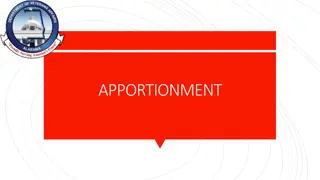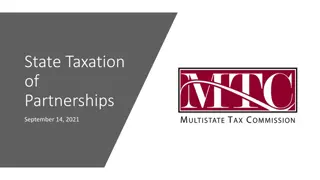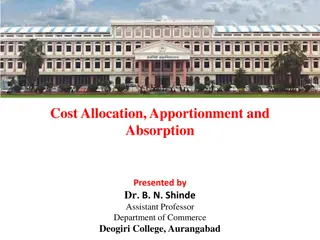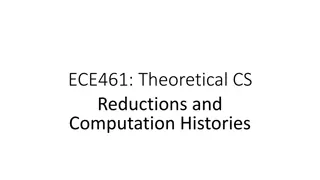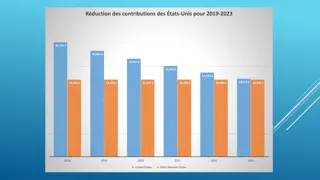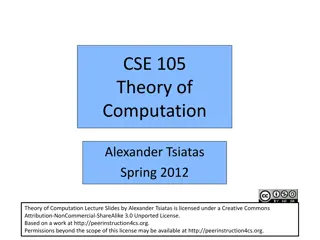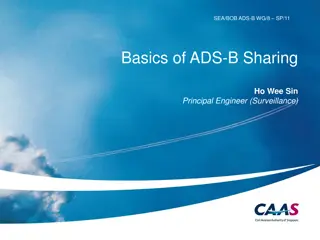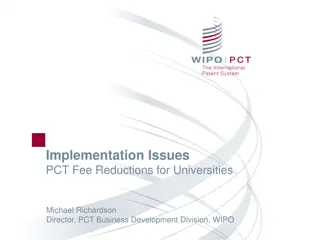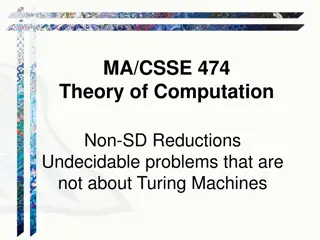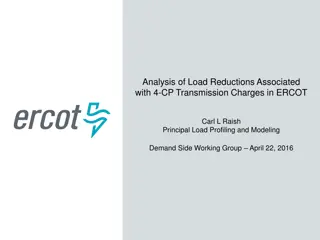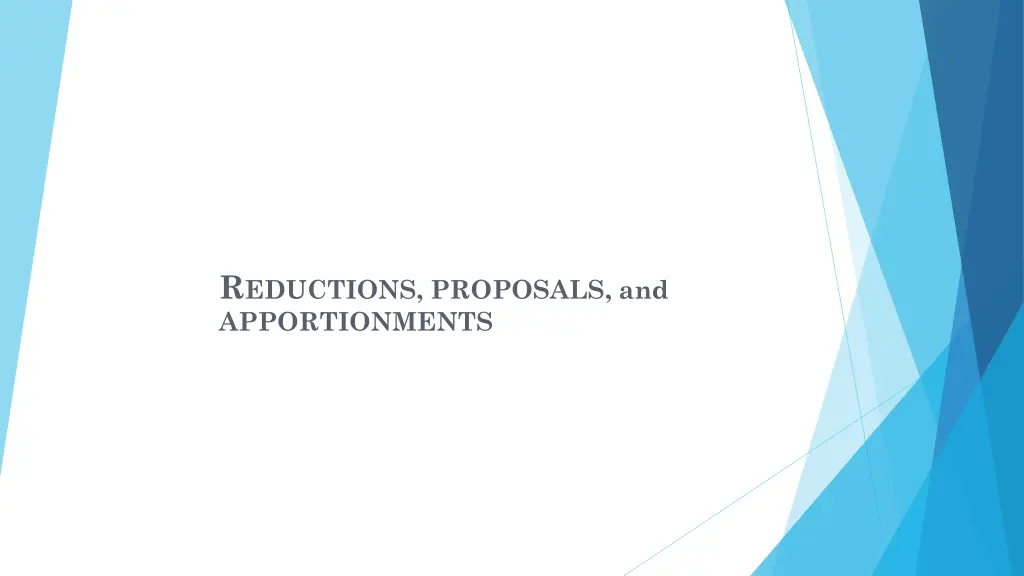
Understanding VA Re-examinations and Disability Evaluations
Learn about VA re-examinations, rating reductions, and proposals for veterans receiving disability compensation. Discover how the VA determines the degree of disability and when re-examinations are required. Get insights into advocacy and advice related to disability evaluations.
Download Presentation

Please find below an Image/Link to download the presentation.
The content on the website is provided AS IS for your information and personal use only. It may not be sold, licensed, or shared on other websites without obtaining consent from the author. If you encounter any issues during the download, it is possible that the publisher has removed the file from their server.
You are allowed to download the files provided on this website for personal or commercial use, subject to the condition that they are used lawfully. All files are the property of their respective owners.
The content on the website is provided AS IS for your information and personal use only. It may not be sold, licensed, or shared on other websites without obtaining consent from the author.
E N D
Presentation Transcript
REDUCTIONS, PROPOSALS, and APPORTIONMENTS
OVERVIEW VA Re-examinations Rating reductions and proposals Advocacy Advice Apportionments
VA RE-EXAMINATIONS Re-examinations To Determine Degree of Disability (38 C.F.R. 3.327) To ensure that vets receiving disability compensation still qualify for their rating, the VA can require them to be: Re-examined by a VA doctor, OR Observed in a VA hospital Generally, VA will require a re-examination if there is evidence that a disability: Has significantly changed since the last exam, or Is likely to improve
VA RE-EXAMINATIONS When it is determined a routine future examination is needed, re- examinations are typically scheduled 5 years from the last exam. See VA Fast Letter 10-14 Revised (July 29, 2010) The 5 year rule applies to routine re-examinations, with the following exceptions: 1. Pre-stabilization ratings under 38 C.F.R. 3.327(b)(1); 2. Discharge from military service due to a mental disorder caused by traumatic stress under 38 C.F.R. 4.129 3. Malignancies that require reevaluation 6 months following cessation of treatment for activedisease 4. Any other future exams required under other sectionsof 38 C.F.R. Part 3 and Part 4
VA RE-EXAMINATIONS VA reviews the re-examination report and then decides whether to change the disability eval VA will probably not re-examine a vet if: The disability is static Symptoms have not significantly changed for 5 years or longer A disability from a disease is permanent and not likely to improve
VA RE-EXAMINATIONS He/she is over 55 years old The minimum disability rating is already assigned The overall combined rating would not be affected if the individual rating for a disability was reduced
VA RE-EXAMINATIONS If a veteran is scheduled for a re-examination, his/her advocate may want to consider contacting the VA and requesting that it reconsiders its decision to schedule the examination Argue that the vet fits into one of the categories where a re-examination is not appropriate
MISSING A SCHEDULED RE-EXAMINATION (38 C.F.R. 3.655(C)) VA must properly notify vets about scheduled re- examinations VA can stop or reduce a vet s benefits if he/she misses a re-examination without good cause
MISSING A SCHEDULED RE-EXAMINATION (38 C.F.R. 3.655(C)) Generally, VA must give notice that states: Benefits will be reduced or stopped unless, within 60 days, the vet: Is re-examined by the VA, or Provides evidence that provescontinued entitlement to the rating in question If a reexamination is required for a claim for increased benefits, VA may deny the claim without considering any evidence
MISSING A SCHEDULED RE-EXAMINATION (38 C.F.R. 3.655(C)) If the claimant is not provided advance notice by the VA of a scheduled examination, he or she may have a defense to any adverse action taken by VA If there is not a copy of a notification letter in the vet s claims file, the representative should ask the VA to void the rating reduction or severance of service connection
MISSING A SCHEDULED RE-EXAMINATION (38 C.F.R. 3.655(C)) Good cause for missing a re-examination: If a vet has a good reason for missing an exam or hospital observation, VA will reschedule without negative consequences The vet must notify the VA of his/her inability to attend the examination VA determines on a case-by-case basis whether the vet had good cause to miss the examination (ex. illness of claimant, death of family member)
MISSING A SCHEDULED RE-EXAMINATION (38 C.F.R. 3.655(C)) VA will take immediate action to stop or reduce a vet s benefits if he/she: Does not explain why he/she misseda re- examination Misses a re-scheduled re-examination, after missing the first examination without a good reason
MISSING A SCHEDULED RE-EXAMINATION (38 C.F.R. 3.655(C)) Vets do not have the right to have someone observe a VA exam Refusing to be examined unless an observer is present is treated as if the vet missed the exam without good cause
RATING REDUCTIONS AND SEVERANCE VA may be able to reduce compensation payments or sever service connection insome cases VA must comply with certain rules guiding reduction and severance
RATING REDUCTIONS AND SEVERANCE VA has the burden to prove improvement by preponderance of the evidence Do not let the VA turn it around and put the burden on the veteran Some ratings or service connection statuses are protected from reduction or severance
OVERVIEW OF SERVICE CONNECTION AND RATING PROTECTIONS Service Connection: 10 years or more Classes of ratings (different rules depending on the class) Ratings in effect for 20 years or more Ratings in effect for 5-20 years Ratings in effect for fewer than 5 years 100% or total ratings (includingTDIU)
PROTECTION AFTER 10 YEARS OF SERVICE CONNECTION (38 C.F.R. 3.957) Generally, if a vet has been service-connected for a particular disability for at least 10 years, VA cannot change the service connection status of that disability The evaluation may be reduced, but service connection cannot be severed unless service connection was obtained by fraud or it is discovered that the vet lacks the required length or character of service (38 U.S.C. 6103)
PROTECTION OF RATING EVALUATION AFTER 20 YEARS (38 C.F.R. 3.951(B)) Generally, if a disability has been continuously rated for at least 20 years, VA cannot reduce the rating below its lowest level during that period. If a disability has been continuously rated at or above a particular rating level for 20 or more years, the VA cannot reduce the rating below that level unless it discovers that the rating was based on fraud
PROTECTION OF RATING EVALUATION AFTER 20 YEARS (38 C.F.R. 3.951(B)) For example, if a vet is granted compensation based upon an original rating of 30% and for the next 20 years the rating varies between 30% and 100%, the rating cannot thereafter be reduced below 30% in the absence of fraud The 20 year protection rule applies even to rating levels that are assigned retroactively because a previous final decision is revised based on a finding of clear and unmistakable error (CUE)
REDUCTION OF RATINGS IN EFFECT FOR AT LEAST FIVE YEARS (38 C.F.R. 3.344) Ratings unchanged for at least 5 years are stabilized VA cannot reduce a stabilized rating unless all evidence in the c-file shows the disability has permanently improved VA cannot reduce a rating based on an exam less thorough than the one used to grant the rating VA cannot reduce a rating if the improvement is temporary or cannot be maintained while the vet is working or actively seeking work
REDUCTION OF RATINGS IN EFFECT FOR AT LEAST FIVE YEARS (38 C.F.R. 3.344) In Tatum v. Shinseki, 23 Vet. App. 152 (2009), CAVC reversed a rating reduction, finding Board failed to consider 38 C.F.R. 3.344 and 4.13 prior to reduction the that the Under 38 C.F.R. 3.344, where there is a change in diagnosis the VA should try to maintain stability of disability evaluations, and, where there is doubt as to the change in diagnosis, retain the original diagnosis with the new diagnosis in parentheses.
REDUCTION OF NON-PROTECTED RATINGS Any rating reduction must be based on a review of the entire history of the disability The VA must determine whether there has been an actual change in the disability Any improvement must reflect an improvement in the vet s ability to function under the ordinary conditions of life and work VA cannot reduce benefits based on exams that are not thorough
REDUCTION OF 100% RATINGS (38 C.F.R. 3.343(A)) VA cannot reduce a total disability rating unless there has been a material (meaningful) improvement of the condition(s) rated 100% VA must compare new evidence of the severity of the condition to the evidence last used to continue the 100% rating
REDUCTION OF 100% RATINGS (38 C.F.R. 3.343(A)) VA cannot reduce the rating unless the condition improved while the vet was working or actively seeking a job If material improvement would allow VA to reduce a vet s rating under the VA Rating Schedule, he/she may still qualify for TDIU VA may not reduce TDIU benefits unless there is clear and convincing evidence the vet is actually employable
REVISION OF THE VA RATING SCHEDULE (38 U.S.C. 1155) VA must revise the VA Rating Schedule from time to time A rating in effect at the time of a revision cannot be reduced unless the disability has actually improved VA must continue to use the old rating criteria until the improvement of the condition would cause a rating reduction under that criteria VA will then apply the new rating criteria, even if it would cause a greater reduction than the old criteria
VA VIOLATIONS OF THE RULES Generally, if VA does not apply the above reduction rules, a rating reduction is invalid and VA must reinstate the old rating, retroactive to the date of the reduction
VA PROCEDURES TO REDUCE OR STOP BENEFITS (38 C.F.R. 3.103, 3.105) VA must give a vet prior notice of its intent to stop or reduce benefits The vet has 60 days to submit evidence to convince VA to continue the current rating The vet has the right to a hearing He/she must request the hearing within 30 days of VA s notice VA cannot finalize its decision until after the hearing If the vet does not submit evidence, VA will finalize its decision
VA PROCEDURES TO REDUCE OR STOP BENEFITS (38 C.F.R. 3.103, 3.105) Reduction or termination will go into effect 60 days after notice of the final decision VA does not need to give advance notice of termination or reduction if: The overall amount of compensation would not be reduced by a rating reduction The vet gives VA factual info about income, net worth, dependency or marital status, knowing it will be used to calculate benefits There is reliable evidence the vet has died
ADVOCACY ADVICE Determine what type of rating it is Over 20 years? Over 5 years? 100%? TDIU? Go over rules for eachtype
ADVOCACY ADVICE Check exams very closely Proper tests Depending on the disability, make sure all the required tests were performed. Check DBQs and VA Clinicians Guide. Rationale Make sure the examiner provides a sufficient rationale
ADVOCACY ADVICE Check exams very closely DeLuca/Mitchell Compliance Make sure that examination adequately addresses functional loss due to pain as well as flare- ups, etc. Explanation of material improvement in light of entire history of disability Explanation of how improvement can be maintained under ordinary conditions of life and work
ADVOCACY ADVICE If exam is not sufficient, insist on reversal of the decision and reinstatement of the higher rating retroactive to the date of reduction Remember: the burden is not on the vet, it is on the VA
Apportionments (Quick Version) R.Fujimoto CVSOA Conf. May 2018
What is Apportionment of My VA Benefits? VA benefits may not be paid to anyone other than directly to the veteran. Family member is the veteran s designated fiduciary or apportionee, the family member may be eligible for receiving payment from the veteran s compensation directly from the VA. All or a portion of a veteran s disability award may be apportioned (assigned) to a veteran s spouse, child, or dependent parent. The person requesting apportionment must: 1) live apart from the veteran and/or 2) demonstrate a need for benefits, or that the veteran is failing to support a family member for whom the veteran is legally responsible. 3) The VA may also apportion a veteran s benefits to a family member if the veteran is incarcerated or if an incompetent veteran is hospitalized without a fiduciary or guardian. To demonstrate need, such factors as the claimant s income and living expenses will be considered. However, even if these requirements are met, the VA must not impose an undue hardship on the Veteran.
Who Qualifies for an Apportionment? An apportionment may be paid to: An estranged spouse and child Children in an estranged spouse s custody A child or children not living with the veteran or surviving spouse and to whom the veteran or surviving spouse is not reasonably contributing, or A dependent parent
Overview of the Apportionment Process To file for apportionment of the veteran s award, the veteran or person wishing to be paid must fill out the VA Form 21-0788, Information Regarding Apportionment of Beneficiary s Award. When the VA receives a claim for apportionment of a veteran s benefits, the VA must gather evidence and decide whether to award the apportionment claim. Once the VA decides to award or deny the claim, the VA must notify the veteran as well as the person requesting apportionment, if other than the veteran. Included in this notification will be the procedural and appellate rights of each party. If an appeal is filed, the VA will treat the issue as a contested claim and release a statement of the case to both parties. Once the statement of the case has been released, the parties have 30 days to file a substantive appeal.
When Will a Veterans Benefits Not Be Apportioned? A veteran s benefits will NOT be apportioned under the following circumstances. 1. If the total benefit payable is so small it does not permit payment of a reasonable amount to any apportionee; 2. To the spouse of a disabled veteran, if a court has found the spouse guilty of conjugal infidelity; 3. To the spouse, if the VA determines that the spouse of a veteran has lived with another person and held him or herself out openly to the public to be the spouse of that other person (unless that relationship was entered into in good faith because the spouse believed the marriage to the veteran was legally terminated). No apportionment will be made to the spouse unless there has been reconciliation with the veteran followed by an estrangement; 4. To a child, if another person legally adopts the child of the disabled veteran (although the additional compensation payable for that child can be apportioned to the child); or 5. To a child, if the child is under age 18 and enters active military service. However, any additional amount will be paid to the veteran until the child s 18th birthday unless the child is included in an existing apportionment to an estranged spouse.
How Does Divorce Affect Apportionment? Each state has its own laws concerning divorce, alimony, and child support, however, there are federal laws which provide protections to the benefits of veterans. The Uniformed Services Former Spouses Protection Act states that VA disability compensation is not considered marital property and therefore is not subject to property division within divorce proceedings. Depending on the veteran s specific state laws, the VA disability compensation may be subject to child support and even alimony. Nevertheless, a divorced spouse will not automatically receive apportionment upon divorce. The spouse must apply and the VA will assess the evidence of whether it is appropriate to apportion the veteran s compensation benefits. If the veteran has dependent children within the custody of the divorced spouse, after assessing whether it is justifiable to apportion the benefits, the VA will pay the apportioned benefits directly to the dependent children. To learn more about how divorce affects apportionment, view your state s specific family law statutes. Overall, it is important to take away that if a veteran gets divorced, his or her benefits will not automatically be apportioned; the divorced spouse or dependent children must apply and go through the VA apportionment process. It is important to review all documents received from the VA to keep track of your benefits, your dependent benefits, and whether any dependent has made a claim for a right to apportionment.


